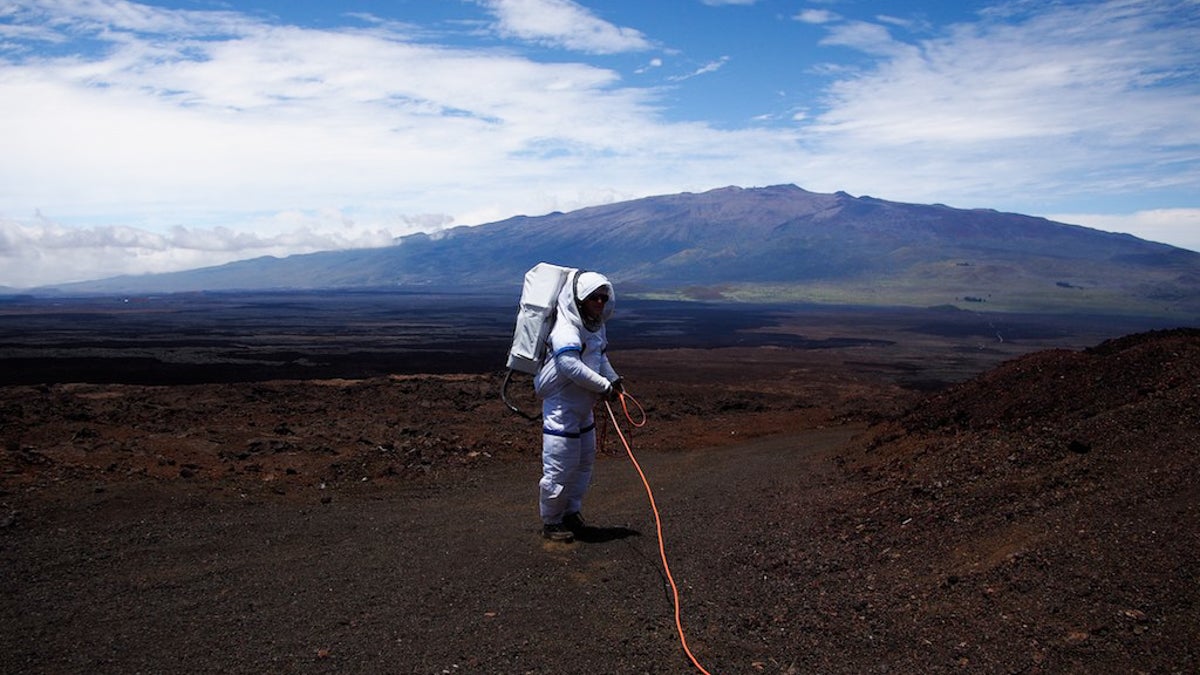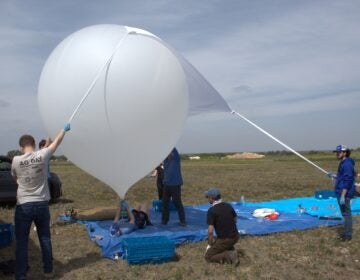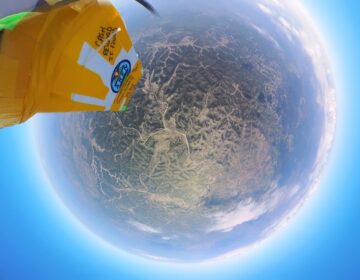An aspiring astronaut’s life on fake Mars
Listen
Ross Lockwood on top of a volcano in Hawaii, where he simulated living on mars for months. (Courtesy of Casey Stedmen)
Ross Lockwood spent four months on top of a volcano in Hawaii. He lived in an inflatable dome the size of a two-bedroom apartment with five other people. Together, he and his crewmates simulated what it would be like to live on Mars.
They were part of an experiment called HI-SEAS: Hawaii Space Exploration Analogue and Simulation. Partially funded by NASA and organized by the University of Hawai’i, HI-SEAS aims to prepare for future Mars missions by studying team cohesion and observing potential problems that Martian astronauts could encounter.
Lockwood explains that all aspects of HI-SEAS are intended to mirror a Mars mission as closely as possible. The HI-SEAS habitat was strategically stationed 8,000 feet above sea level on the volcano Mauna Loa, a Mars-like, red-rocked landscape far away from human civilization.
Lockwood and his crew members also lived in a restricted environment and essentially pretended to be astronauts; they cooked with dehydrated foods, wore space suits every time they left their habitat, and used an internet connection with a built-in 40 minute delay to reflect the amount of time it would take messages to get from Mars to Earth and back.

The view of the dome at night time. (Courtesy of Ross Lockwood)
Lockwood details the HI-SEAS Mars simulations–some of which were more successful than others:
“One frequent question that we get is whether or not our mission controllers supplied us with problems inside the habitat. And there’s a very awesome quote that I repeat from the director of the mission. She says, ‘they come up with their own problems.’ And that was totally true.”
For example, one night, following a command, he tried to reboot one of the habitat’s sensor connectors.
“And so I thought, well this is innocuous. I’m just going to go and pull it out of its socket and then push it back in. It should be very simple. Well as soon as I pulled it out, all the lights in the habitat went down. In fact, every electrical system in the habitat went down…”
For more on Lockwood’s experience, listen to his full story above.
WHYY is your source for fact-based, in-depth journalism and information. As a nonprofit organization, we rely on financial support from readers like you. Please give today.







